Piacenza, Italy is not a well-known town, and it’s definitely not too visited by tourists. However, it is indeed a hidden gem in the beautiful region of Emilia Romagna that shouldn’t be missed! But what to do in Piacenza? If you’re looking for a place off the beaten path, Piacenza is definitely a must-see! And here’s a complete travel guide, with all the things to do in Piacenza, Italy!
You’re planning to visit the famous food valley of Italy, the region of Emilia Romagna? Between the destinations such as Bologna, Ferrara, or Parma, Piacenza definitely shouldn’t be missing from your Emilia-Romagna itinerary, since it’s a place that wasn’t yet overwhelmed with visitors, and it’s still really traditional, and charming. Let’s get started and discover the best things to do in Piacenza, Italy!
Piacenza travel guide – Things to do in Piacenza, Italy
History of Piacenza
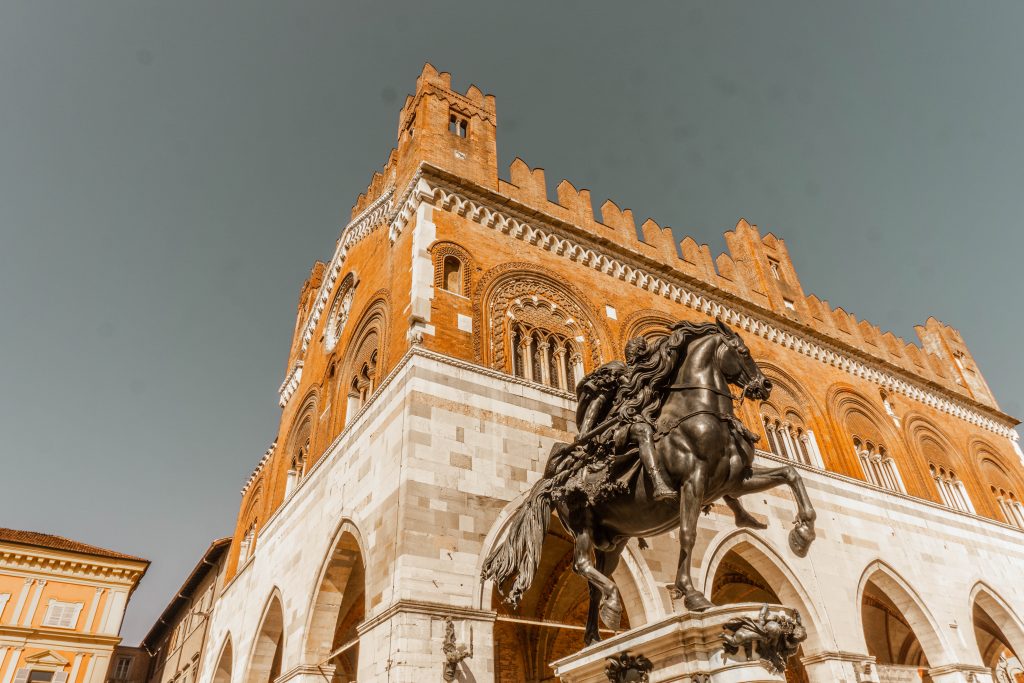
Before I answer your question for what to do in Piacenza, let’s talk some history! I’ll try to write this shortly, however, the history of this city is so long, that it’s going to need a couple more articles to say it all. In this Piacenza travel guide, you don’t just learn about the best things to do in Piacenza, but also about the history of Piacenza, how to get to Piacenza, and what to eat in Piacenza!
Piacenza’s history is dating back to B.C. The city was the 53rd colony of the Roman Empire. The town and commune are located between 3 rivers, by name the Po, the Nure river, and the beautiful Trebbia river.
Piacenza’s history in the Middle Ages
Piacenza had a really colorful, yet bloody history before and during the Roman Empire. In the Middle Ages, it was affected by the Gothic War, and it was concurred by France numerous times. However, over the centuries, it managed to fight back the neighboring communes, such as Pavia, Parma, etc.
Piacenza in the 12th century was doing amazing in the economy! It actually became one of the richest communes in Italy, but also Europewide. This happened over the rule of the Scotti and Pallavicini families. Later on, the commune went under the rule of Milanese families, such as the Visconti and later on the Sforzas’.
From the New Age to WW II
Due to the location of the town, which is at the junction of two main roads in Italy, it was continuously getting occupied by France. This explains why the Piacentini dialect sounds really like French. This continued actually until Napoleon’s wars, which after the Habsburgs gained power over the city in the 19th century.
In 1860, at the unification of Italy, the population of Piacenza voted on unification with 99.50% yes! Therefore it became the firstborn of unified Italy! This year, the Piacentini people joined with massive numbers the expedition of Garibaldi, to concur and unite Italy.
And as the last part, I have to mention WW II! In the last year of the war, the town was heavily bombarded. All the bridges on the Po, Trebbia, and Taro were blown up by Germans, which basically isolated the commune.
Many parts of the historic center of Piacenza were also bombed, and had to be restored. The active partizans however managed to break through and enter the city in 1945. For this, Piacenza was honored with Gold Medal for Valour in Battle.
Interesting facts about Piacenza, Italy
Why is such a beautiful town like Piacenza having just very few visitors?
Since the town was occupied so many times, its residence during the centuries became more and more isolated and distant. This is one of the main reasons the town is still not a big tourist destination. It’s really interesting though, that Piacenza is located near one of the main roads between Milan, Bologna, and Florence, and still, most people who visit this area don’t ever stop in Piacenza.
The effect of isolation
Since all the places I’ve seen in Italy are frequently visited, people everywhere seemed so open-minded and having more of an accepting mindset. Piacenza however, due to this isolation is actually the kind of place where you’re being judged for your outfit, and you want to implement a more restrained attitude. People here are really well-behaved and concentrate a lot on their nice appearance. It is a truly interesting experience to visit a conservative town like Piacenza.
The Piacentin dialect
Another interesting fact about Piacenza is, that the Piacentino dialect sounds really like french. The reason being that Piacenza has been ruled by France for a long time.
Where is Piacenza, and how to get to Piacenza from Milan?
Many of you might ask where is Piacenza in Italy? It’s not a popular destination, so I’m not surprised by this question! Piacenza is at the edge of the region of Emilia Romagna, and it’s the closest Emilian town to Milan. The town is located near the Po river, in a very comfortable zone, right near the main highway that goes all the way up to Milan, and down to Parma, Bologna, and Rimini.
If you’re having a car, the easiest way is to use the highway to get to Piacenza! Otherwise, it’s easily reachable if you’re heading by train to Piacenza from Milan (from Milano Centrale). The train ride is about 53 minutes, and it costs €6.70. The same is if you’re heading from the South-East, such as if you’re heading to Piacenza from Bologna or Parma.
If you go on a round trip in Emilia Romagna, Piacenza can always be a first or the last stop! Obviously, depending on if you’re heading from Milan, from the Bologna area, or from Florence. Let’s see now when to visit Piacenza and what to do in Piacenza!
When to visit Piacenza, Italy?
In the winter, there’s not too much to do in this town, as in most the towns in the region. Everything is closing at 10 pm and there’s nothing to do after. For winter times, I definitely suggest big cities in Italy, such as Rome, or Milan! Piacenza in the winter is great if you’re interested in winter hikes or snowshoeing.
This area is good to visit during the spring, summer, or autumn time. However, if you’re doing a summer trip, be prepared, that there aren’t beaches around! There’s a communal bath, with external pools as well, but I’ll get back to that later on. However, you can always plan a trip in the nearby hills, along the riverside of the Trebbia or Nure river. People in the province are heading to these rivers to sunbathe and swim. The water of these rivers is clear and beautiful. Also, there are many great outdoor pools all over the villages in the hills.
Now, let’s get into the best things to do in Piacenza, Italy, shall we?
What to do in Piacenza, Italy?
1. Stroll around the historic center of Piacenza
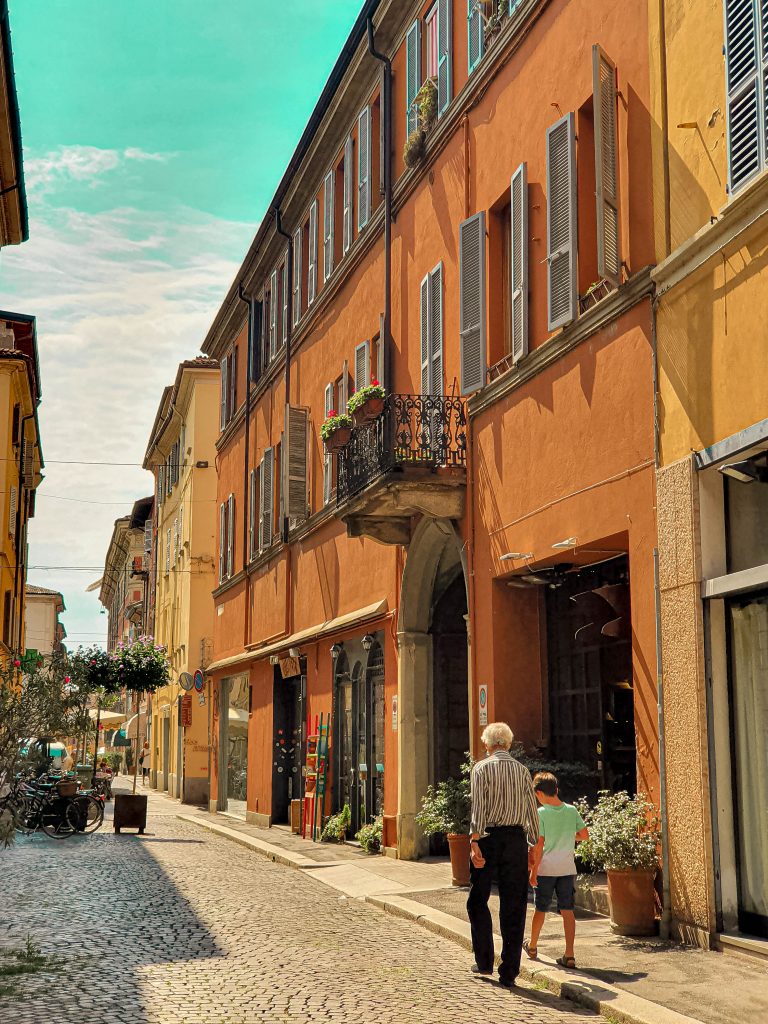
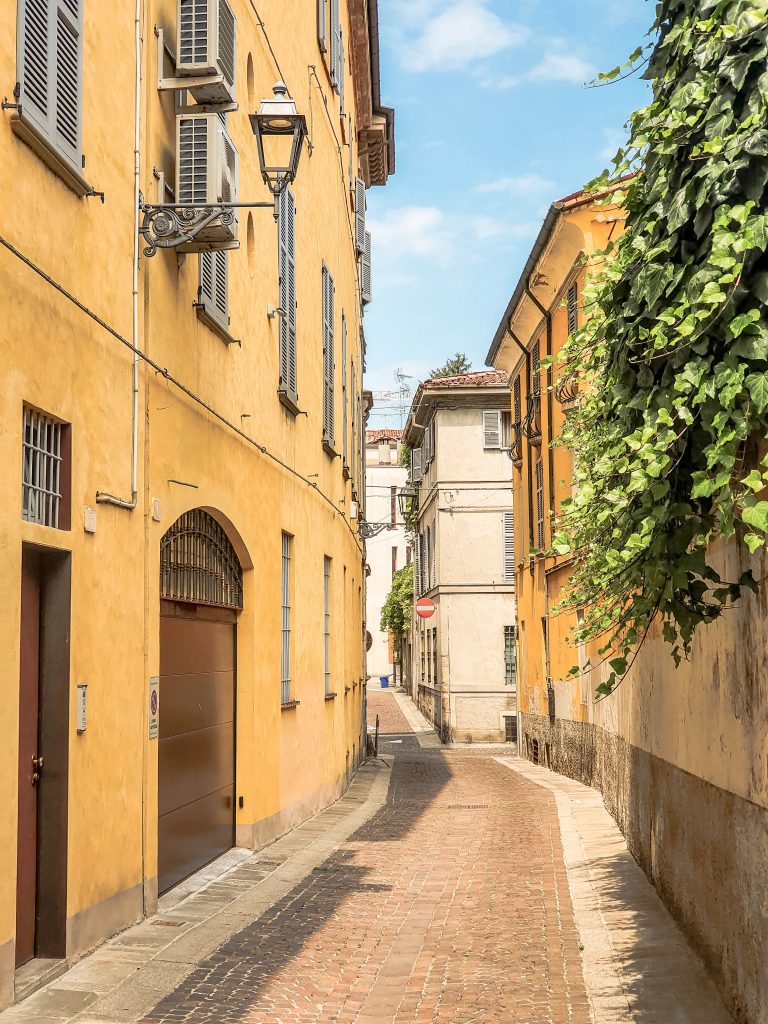
If there’s one thing I can’t get enough of, it’s walking in the historic center of Piacenza, Italy. After months of doing it, I’m still enjoying so much walking around! In every city and town of Italy, the old towns are just so charming, with these very typical colorful buildings! You just want to wander around and soak up all the great vibes. So the first step to discover, the best of the things to do in Piacenza is simply to walk!
So, are you asking what to do in Piacenza? Strolling around in Piacenza’s historic center is a really great start for your visit! Get lost on the small streets, especially in the area between Piazza Duomo and Piazza Cavalli! There are so many colorful beautiful little streets you’ll love!
Explore the palazzos on Corso Vittorio Emmanuele II, with the restaurants and bars at their ground. Don’t miss Via XX Settembre either, which is considered the town’s shopping street! Pass through Via Roma, and Via Chiapponi as well. We don’t stop here, though, as there are more things to see in Piacenza!
2. Piazza dei Cavalli
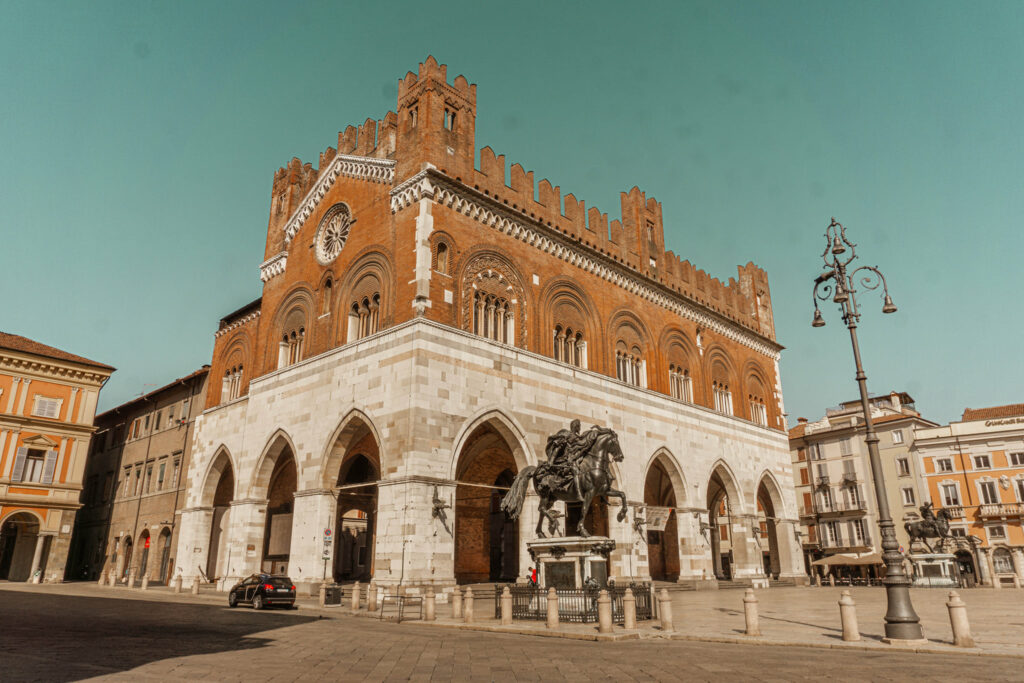
Piazza dei Cavalli is basically the main square of the town. It’s a magnificent place, surrounded by historic buildings. Piazza Cavalli is named after the two equestrian statues of the Farnese family, on the two sides of the Palazzo Gotico. They were made by the Tuscan artist, Francesco Mochi in 1620.
On Piazza Cavalli, you can find a couple of other historic buildings, beside the Palazzo Gotico, such as the Palazzo del Mercanti and the Palazzo del Governatore. Some of the most famous aperitivo spots are also to be found on Piazza Cavalli, so you can stop by in the evenings for an Aperol Spritz and snacks.
The piazza is also surrounded by cute cafes, with outdoor tables so you can stop by in the morning hours to enjoy the beautiful square and a great brioche on the side! Piazza Cavalli is definitely the top one on the list of the things to do in Piacenza!
3. Palazzo Gotico on Piazza Cavalli
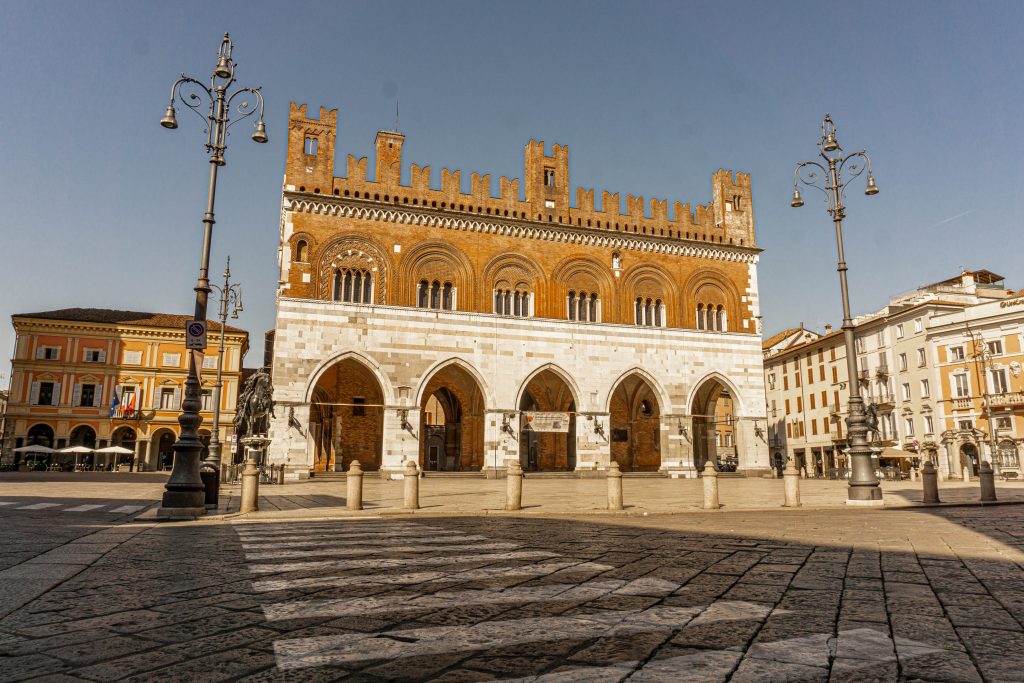
As mentioned, Palazzo Gotico is the main, central building on Piazza dei Cavalli, Piacenza. If we’re speaking about things to see in Piacenza, this can’t miss your bucket list!
Palazzo Gotico is a great example of Lombard civil architecture. The main characteristic of this architecture is that the ground floor and the colonnades are covered with white marble. In the meantime, the upper floor is covered with red bricks. The iconic building of Palazzo Gotico was made in 1281.
Sitting for a little while on the steps of the palazzo, just observing the life of this little town, or walking under the ancient colonnades is something you can’t skip while you’re in Piacenza!
4. Chiesa San Francesco
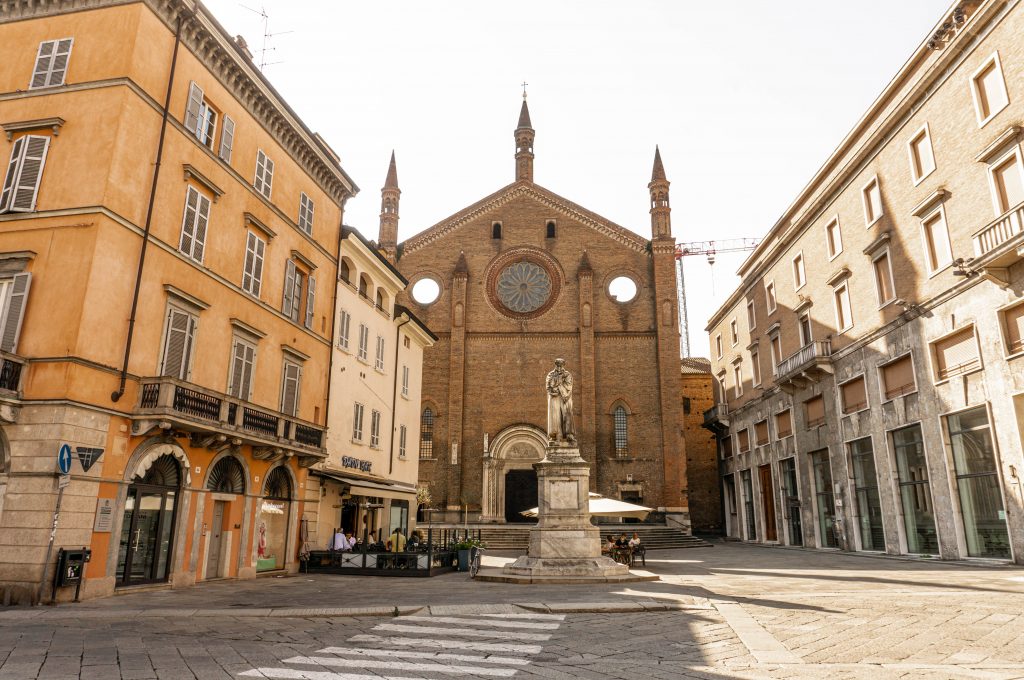
The medieval church of San Francesco is located on the left side of Piazza dei Cavalli. The church and monastery were built under the Friars Minor order, between the 13th and 14th centuries. During its long history, it was the convent of the Clarrissan order’s nuns. In the Napoleon wars, a part of it was converted into an armory and hospital. During this period as well, the church remained open for the faithful.
While the outside is brickwork, the inside is hiding some magnificent pieces of frescoes, rosette windows, and altars from the 14th and 15th centuries. If you’re visiting Piacenza, you can always enter to see the inside. It is really worth it!
5. Duomo di Piacenza
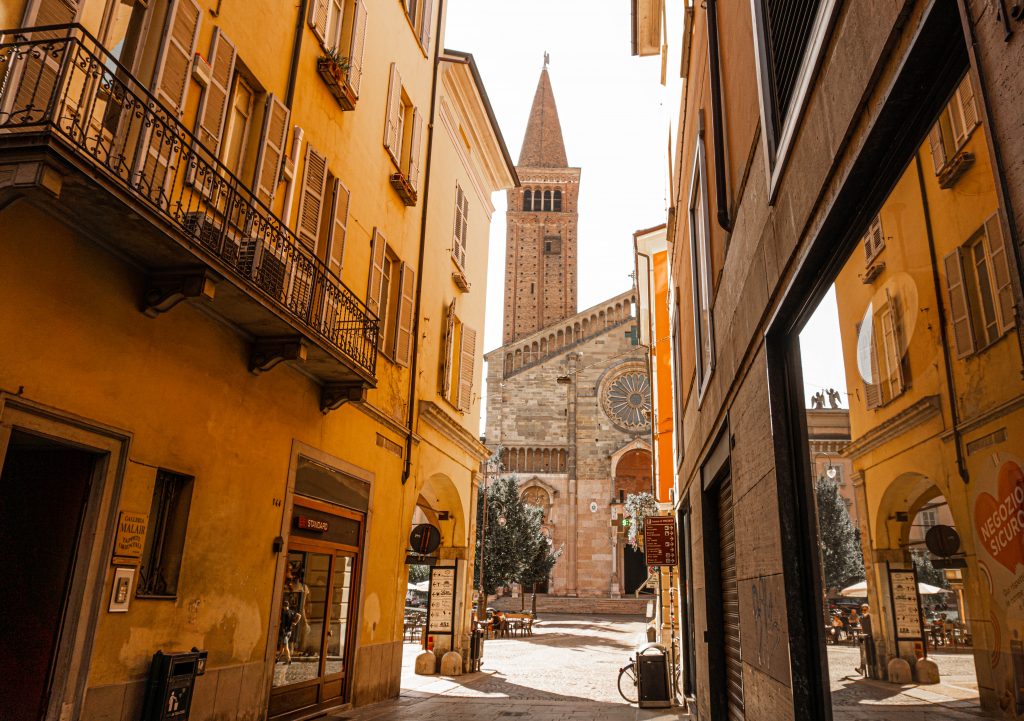
Another of the best things to do in Piacenza is to visit the Duomo di Piacenza (Piacenza Cathedral). The Piacenza Cathedral, otherwise known as the Duomo di Piacenza was built in the 12th-13th centuries. It is one of the most valuable pieces of Romanesque architecture in Northern Italy! It’s also my favorite church in Piacenza, Italy.
The cathedral is located on Piazza del Duomo, which is the second most iconic square in the historic center. Piazza del Duomo is connected with Piazza Cavalli by the previously mentioned shopping street, Via XX Settembre. On the piazza, you can find many restaurants, with outdoor space to sit and enjoy the beautiful view.
About the Duomo di Piacenza
The duomo di Piacenza is the largest Romanesque cathedral in Emilia-Romagna! It has a total external length of 85m, and a facade of 32 meters. When you go inside, you’ll see two aisles divided by 25 massive columns.
The most important reason you have to add the duomo to your things to see in Piacenza, are the frescoes of the 14-16th century that you can see inside. If you have a thing for old historic buildings, the Duomo of Piacenza will definitely be the highlight for the things to do in Piacenza, Italy. I personally enter the cathedral weekly. Just to sit there. It is a beautiful place to recharge your spiritual batteries.
Funny fact: the Piazza del Duomo is really colorful, featuring many shades of orange – I’m calling them the 50 shades of Salmon!
6. Basilica di Sant’ Antonino
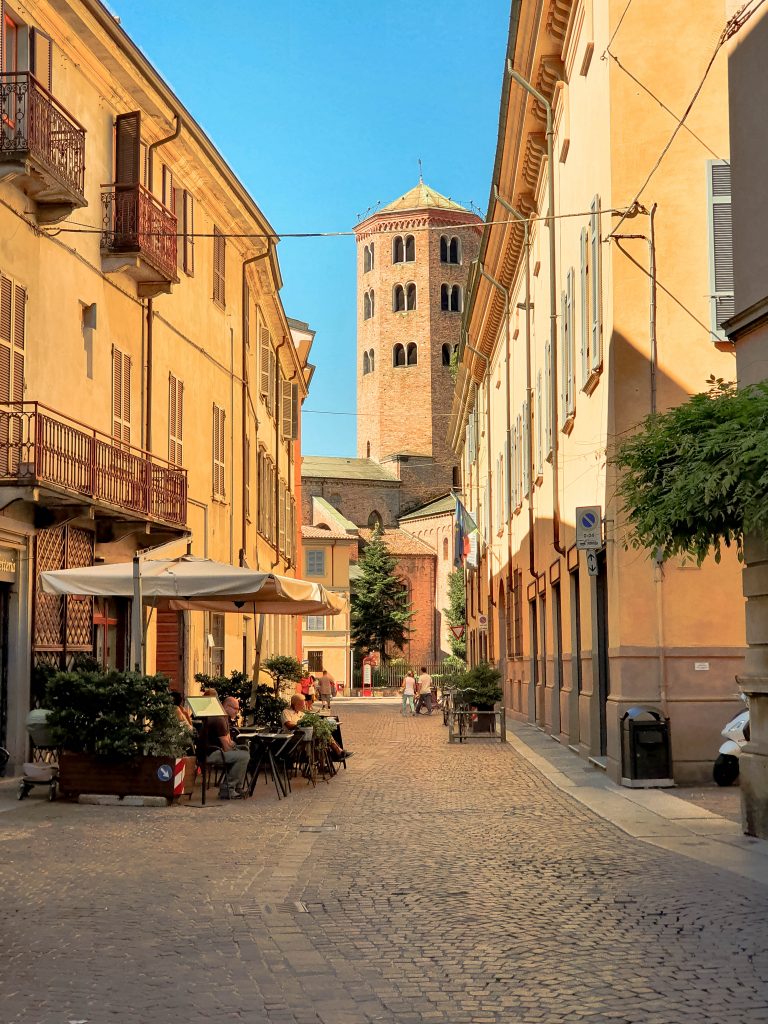
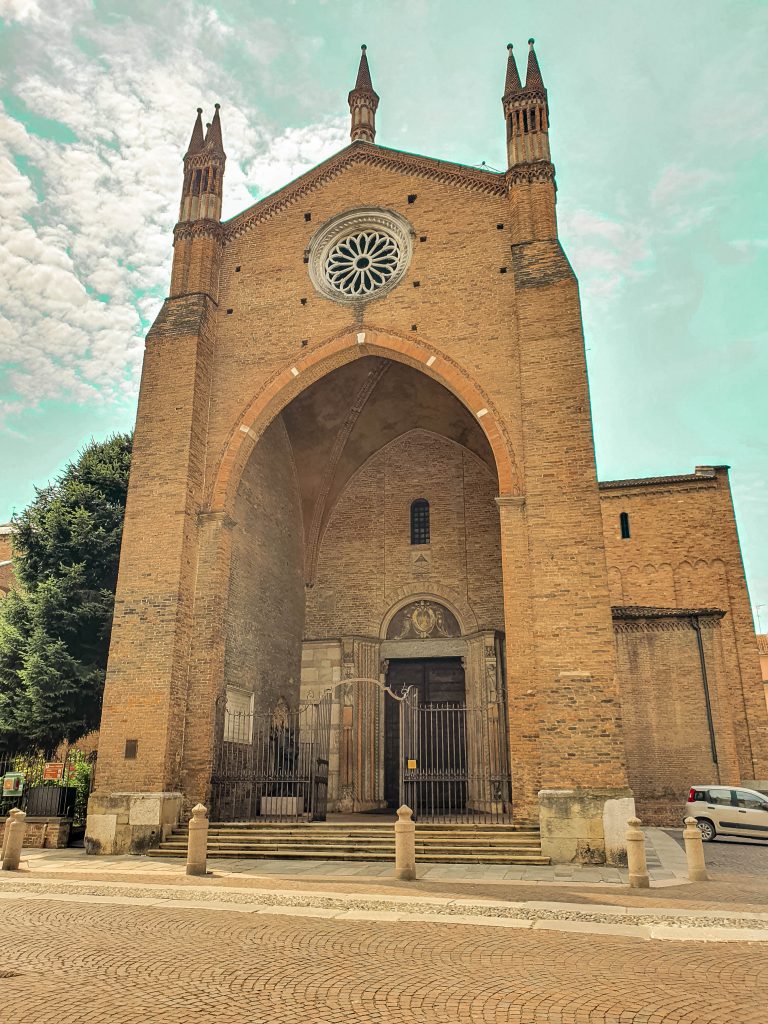
Basilica of St. Antoninus – otherwise Basilica di Sant’ Antonino is located about 2 minutes away from the Piazza del Duomo. The easiest way to reach it from there is by heading down the Via Chiapponi. San Antonino is one of the most beautiful Catholic churches in town, and it is definitely one of the best things to do in Piacenza, Italy!
The church is dedicated to the patron saint of Piacenza, St Antoninus. Basilica Sant’ Antonino is another significant piece of Romanesque architecture, characterized by its large octagonal tower that’s visible from a great distance.
History and things to see in Piacenza’s oldest church, Basilica Sant Antonino
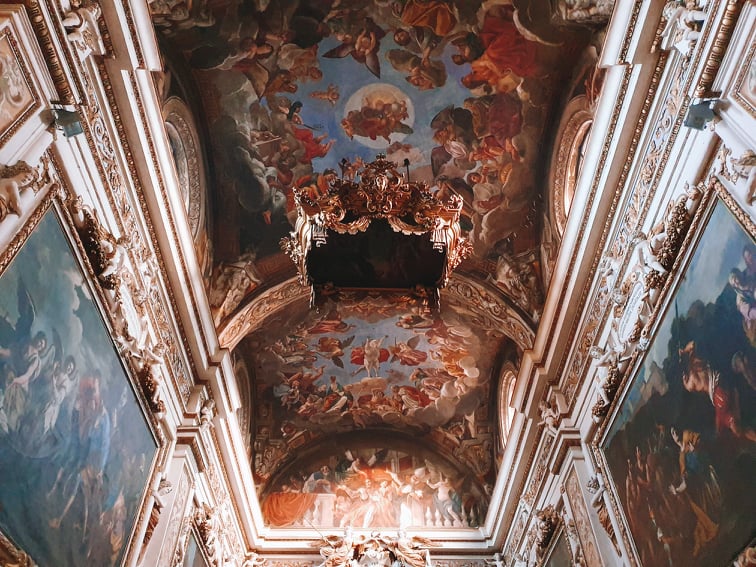
The first building dedicated to St Antoninus was built between the 4th and the 5th centuries. During his long history, it was enlarged, rebuilt, and got a reconstructed, larger tower during the 12th and 13th centuries. As some pieces got damaged, they had to be rebuilt again over the 15th and 16th centuries.
One of the most important reasons to visit the Basilica di Sant’ Antonino, Piacenza is because of its characteristic gothic architecture inside, along with the absolutely amazing 17th-century frescoes that you can find inside the cathedral. Basilica Sant’ Antonino is definitely one of the best things to see in Piacenza, Italy!
7. Palazzo Farnese, Piacenza

Another highlight for the best things to do in Piacenza Italy! The Palazzo Farnese is located close to the bank of the Po river, in the historic center of Piacenza, Italy. The immense building was built in the middle of the 16th century by Ottavio Farnese. He was duce of Castro, Parma, and later the duke of Piacenza as well. At the time when he became the duke of Piacenza, he set up his court in the Palazzo Farnese.
The construction of this partly built palace was completed in 1601, under the rule of duke Ranuccio (I) Farnese. After the death of the Farnese duke, the palace went into a long period of disrepair. The restoration began just later, in the 19th century.
Museums in Palazzo Farnese, Piacenza
Today, the Palazzo Farnese is hosting museums, and important exhibitions.
One of the most important museums is the Archeological Museum, where you can see the famous Liver of Piacenza. This is a relic that’s the witness of the existence of the Etruscan religion after the Roman conquest in the ancient ages. The Liver of Piacenza is probably the most important item in the collection of the museum in Palazzo Farnese, Piacenza, so one of the best things to do in Piacenza, Italy is definitely visiting this!
You can also find here the gallery of the Pinacoteca which contains paintings from the 16th and 17th centuries. This collection once belonged to the Duke’s collection. One of the most important pieces of the collection is Boticelli’s Madonna with the young St. John.
Beside the Pinacoteca, you can find the Museum of the Italian unification, the Museum of Ancient Weapons. If this isn’t enough, there’s a large collection of paintings and sculptures from the 12th to the 17th centuries too.
8. Outdoor pools in and around Piacenza, Italy

In the town there aren’t many pools that you could go to, since most of them are private, just for members. There’s however the Polisportivo di Piacenza that isn’t really visited just by locals! However, if you spend over 2 days in the town, especially in the summer, you might want a place to cool down! Therefore, I decided to add this bath as well to the things to do in Piacenza!
It’s a super budget-friendly place, so if you don’t want to spend too much money, the Polisportivo is great for that! The entrance is €6.80, plus extra costs for an umbrella and beds. Outside, there’s a spacious grassy part to sit. There are two pools, a large one for swimming, dotted with a slide, as well a smaller one for kids. That has a slide too! There are some other, greater baths to visit in Piacenza, however, this one is what you will find inside the city!
If you’d prefer going somewhere outside the town, you can look up the pools in the villages of the Province of Piacenza. Locals are usually rather going to these pools as well instead of sitting in town!
9. Food in Piacenza, Italy

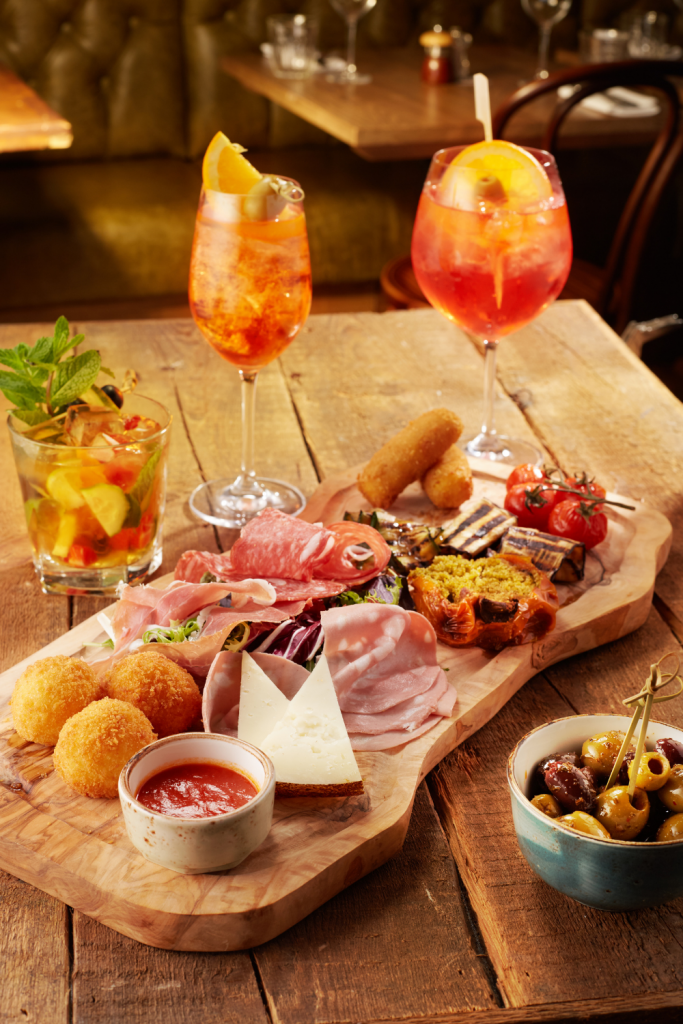
The region of Emilia Romagna is one of the most famous regions in Italy when it comes to food! Just think about the ragu Bolognese, the Parmigiano (parmesan cheese). Also, the prosciutto di Parma, and the tastiest salumi in Piacenza (different types of Italian salami).
The three most famous types of cold cuts, salami in Piacenza are the Coppa Piacentina, Pancetta Piacentina, and Salame Piacentino. I honestly couldn’t pick my favorite salami, since I love all 3 types. If you’re in the province and you love meat, one of the best things to do in Piacenza, Italy is definitely to stop by a salumeria and get some of these cold cuts!
Where to eat in Piacenza?
Since I live in this region, I can’t stop eating! And everything I have tried so far was just amazing! Now if you’re in Piacenza on Wednesday or Saturday, one of the best things to do in Piacenza is to catch the local markets on Piazza dei Cavalli and Piazza del Duomo. Here you can buy local products. There are also shops to do so, such as the Salumaio Valla in the historic center.
While you’re in Piacenza, I really do advise going for an Aperitivo! In aperitivo time near your drink, you’ll get some delicious bites! Some of my favorite places to go for aperitivo are Battisti Cafe, Cafe Mercanti, Dubliners Irish Pub, and the Grida Cafe. Usually, in touristic places, the Aperitivo comes with just nuts, chips, and maybe olives, but since this town isn’t touristic, at aperitivo you can get some amazing, tasty bites!
For authentic dinners, definitely visit, Trattoria La Pireina, and Osteria del Trentino as well! You must know, that there are many people in town (in restaurants as well) who don’t speak English! So get ready to use your Google Translate when you’re in a restaurant.
Also, in many traditional osterias, you won’t get a printed menu. In many places, you’re being told to face what you can choose from, and you pick something. This is really hard in case you don’t know the dishes or the waiter doesn’t speak English. Though, if you’re going for Anolini in brodo, or panzerotti al forno (pasta with ricotta and spinach), you won’t regret it! If you want to try horse meat, Piacenza is the place you should do it! Though, remember that it’s not everywhere that you won’t get a menu, it’s just at some really traditional old-fashion osterias that this can happen! Still, these places are the best for authentic Italian food from Piacenza!
If you’re craving pizza, or some less-traditional spots, Baciccia, Balera, Dubliners Irish Pub, and Sosteria or the Luporeria are great. These places are specialized more in pizza, hamburgers, and piadina.
10. Where to stay in Piacenza?
One of the top picks for a more luxurious stay is definitely the Grande Albergo Roma or Hotel Ovest. If you’re looking for a cute b&b in the historic center of Piacenza, I definitely recommend picking the Antica Piacenza! Lovely place, with lovely owners! If you’re visiting Piacenza without a car, I do suggest picking accommodation in the historic center, as it’s much easier than if you have to walk in the city to discover all these things to do in Piacenza, Italy.
Booking.comHave I answered your questions on things to do in Piacenza, Italy?
It’s not just the town that’s great to visit in Piacenza. The province of Piacenza, Italy is packed with amazing and breathtaking places that you must visit! First, and most importantly I’d like to highlight the hills of Piacenza, Italy. The Val Trebbia is one of the most beautiful rivers I have ever seen, with turquoise, crystal clear water, and stunning lands.
There are also many tracking trails in the hills, and castles, which makes it even more beautiful. The typical Sassi Italian houses, the hills covered with vineyards, and the beautiful panoramas make it worth a visit! If you’re looking for some peaceful, stunning outdoor places, one of the best things to see in Piacenza will definitely be the Val Trebbia! There are more articles coming with activities and places to visit in the hills of Piacenza!
Pin it: Things to do in Piacenza, Italy
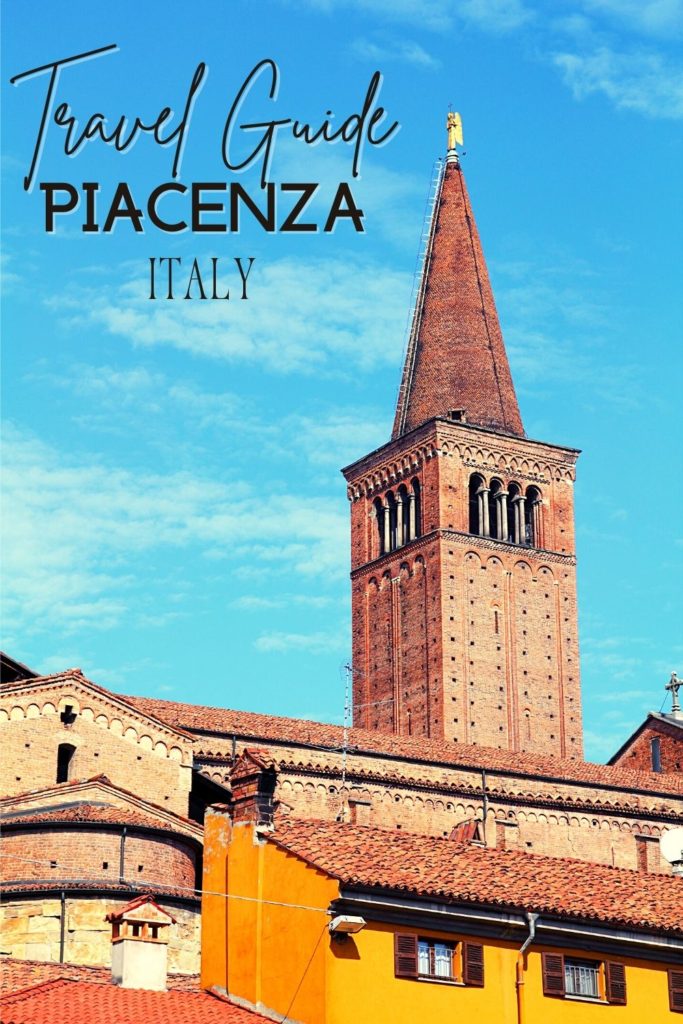
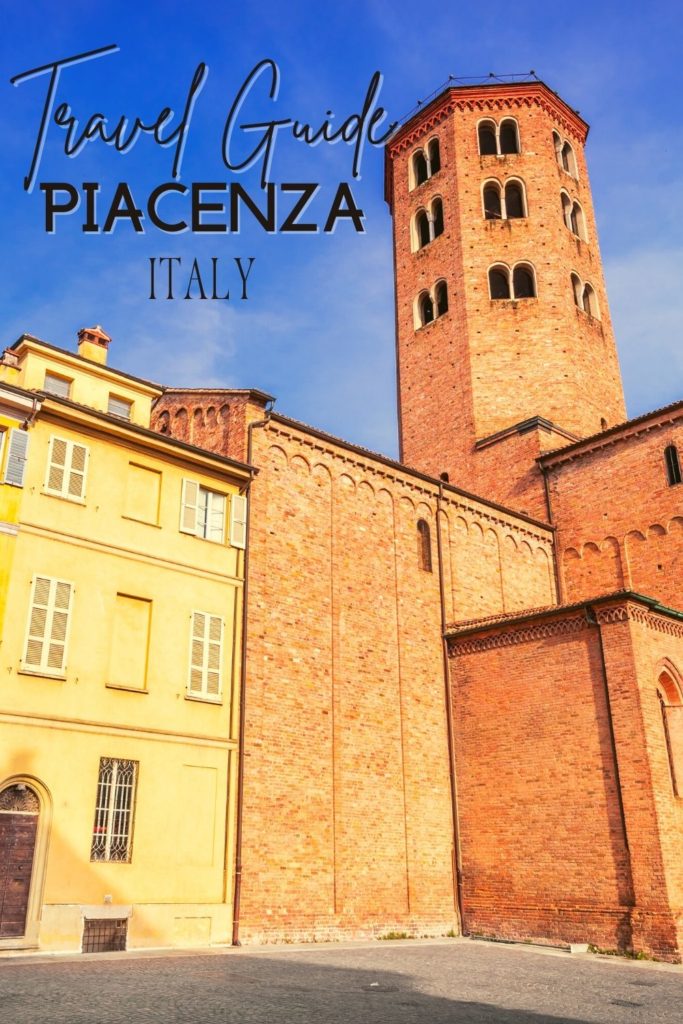
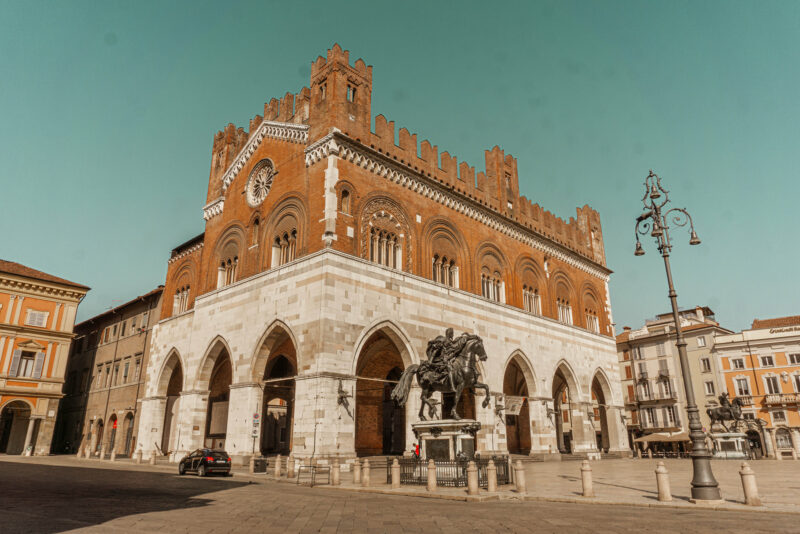
It is a beautiful town indeed! And I do completely agree with you, exploring Italy a never-ending journey! <3
Piacenza seems like a wonderful place! Italy is literally a wander. No matter how much you’ll explore, there’s always more places to see. Thank you for sharing!